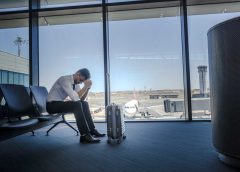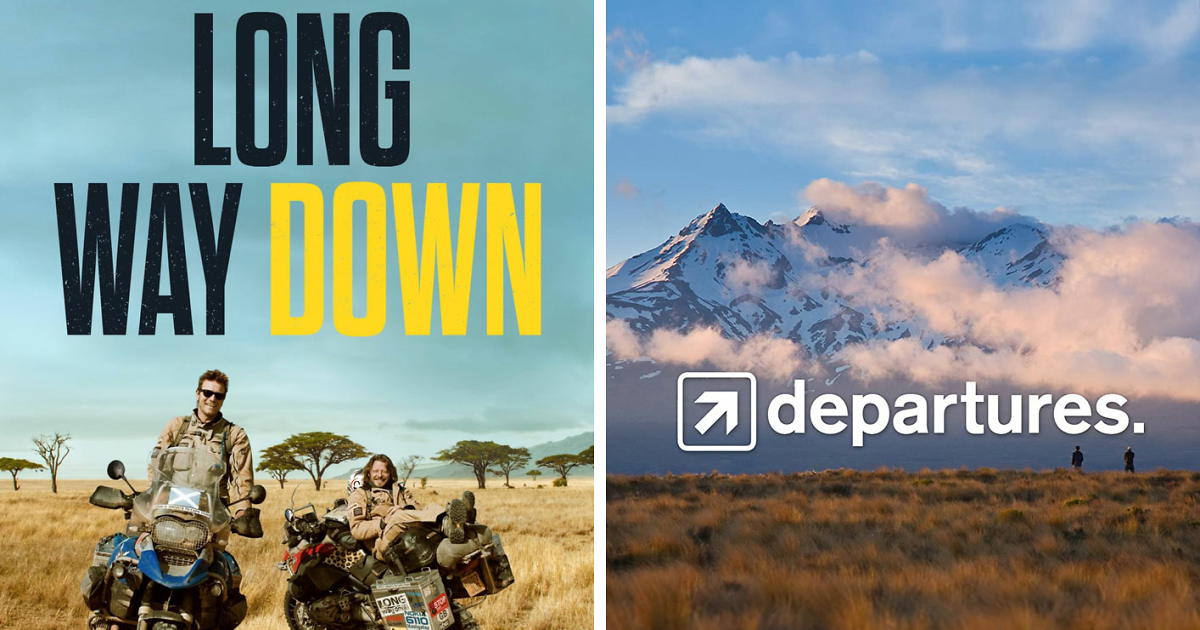
Easy Solutions to 3 Common Air Travel Nightmares
[ad_1]
Air travel is a mess these days given this summer’s onslaught of delays and canceled flights. In fact, the on-time arrivals rate hasn’t been this low since 2014, according to data from the Bureau of Transportation Statistics. In the first six months of 2022, more than 20% of flights originating from a U.S. airport were delayed and more than 3% of flights were canceled. Staffing shortages and high demand further exacerbate why air travel is so broken.
For travelers hoping for a seamless flying experience, the odds aren’t looking good. But travel insurance can come to the rescue in many would-be air travel nightmares.
Here are three common airline issues, the types of trip insurance coverage you need to reimburse the costs, and how you might be able to get trip insurance at no additional cost.
1. Your bags were damaged, lost or didn’t show up on time
According to travel insurance provider World Nomads, baggage delay claims increased a stunning 122% from May to July 2022, compared with the same period in 2019. If your baggage is missing or delayed, it can leave you scrambling to purchase new stuff from the expensive hotel gift shop — not to mention heartbroken to lose your treasures.
Thankfully, lost luggage or baggage delay insurance can reimburse items you need to purchase for use during your trip.
Baggage loss: While lost luggage insurance can’t guarantee your original items will be returned, it can reimburse you for replacements up to a covered amount. Coverage varies by policy, but expect reimbursement from $1,000 to $3,000 per traveler.
Baggage delay: If you’re separated from your bags for more than a few hours but the airline does eventually get them back to you, you’ll likely also have coverage. Typically, if your stuff is delayed a certain amount of time (usually six hours or more), you’ll be reimbursed when you buy essentials like toiletries and clothing. Usually, coverage is less than if your stuff is lost completely; coverage of up to $100 a day per traveler for up to five days is pretty common.
2. Someone in your family gets sick or injured
Maybe you sprain your ankle on day one of a weeklong ski trip and would rather fly home than sit alone in a cabin. Perhaps your kid breaks their arm ahead of the Little League World Series and you want to cancel your trip since they can’t play. Should you need to cancel a flight before takeoff or cut a trip short, trip cancellation or interruption insurance can help.
Trip cancellation: Trip cancellation insurance can protect prepaid, nonrefundable reservations like flights or hotel reservations if the trip is canceled due to an extraordinary circumstance — and illness or injury is usually considered such.
Trip interruption: Trip interruption is similar to (and often packaged with) trip cancellation coverage — but kicks in if illness or injury strikes mid-trip and you can’t continue.
Note that this insurance covers only the travel costs; it’s different from travel medical insurance, which covers actual emergency medical expenses while you’re traveling.
3. Weather forces your flight to get moved to the next day
A weather delay can be irritating, but it’s better than flying through a lighting storm in an aluminum tube or taking off from a flooded runway. If you’re stuck on the ground, take solace in the fact that trip insurance can often pay for Mother Nature’s inconveniences.
Trip cancellation or interruption insurance: This insurance may help if severe weather cancels your trip before you even get there, assuming severe weather is a covered reason under your policy (it is on most policies).
Trip delay insurance: If the rough weather is set to pass and your trip is simply delayed, a policy that includes trip delay reimbursement for severe weather can help. Typically, trips delayed 12 hours or more can net you reimbursement for expenses, such as meals or lodging.
Coverage varies by policy, but it often provides reimbursements up to thousands of dollars per person for unused flights, tours and hotels.
How to get trip insurance
The different types of trip insurance can be purchased through dedicated travel insurance policies, usually sold for a certain percentage of your trip cost. Prices can vary based on the nature and length of your trip, your age and the exact coverage you want. Some travel packages also offer trip insurance, whether purchased through a travel agent or the company itself, like Disney.
However, you might not need to pay for it. Many premium travel credit cards offer types of trip insurance as a benefit for trips paid for with the card — and often, the coverage is as good as coverage you pay for out of pocket. For travelers who typically purchase trip insurance, this benefit alone can easily offset any annual fees on the card.
The article Easy Solutions to 3 Common Air Travel Nightmares originally appeared on NerdWallet.
[ad_2]
Source link







